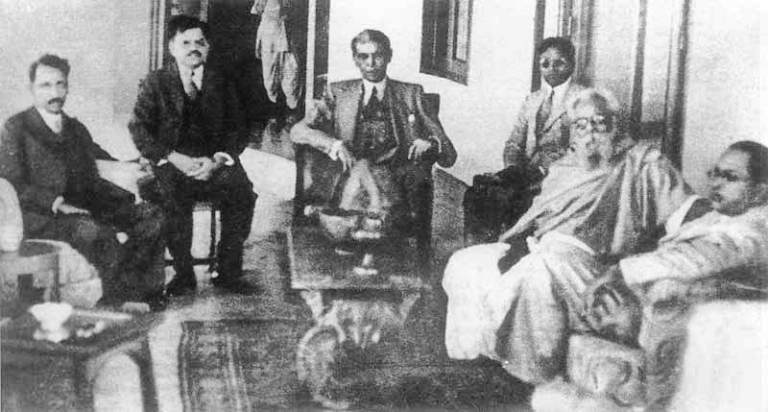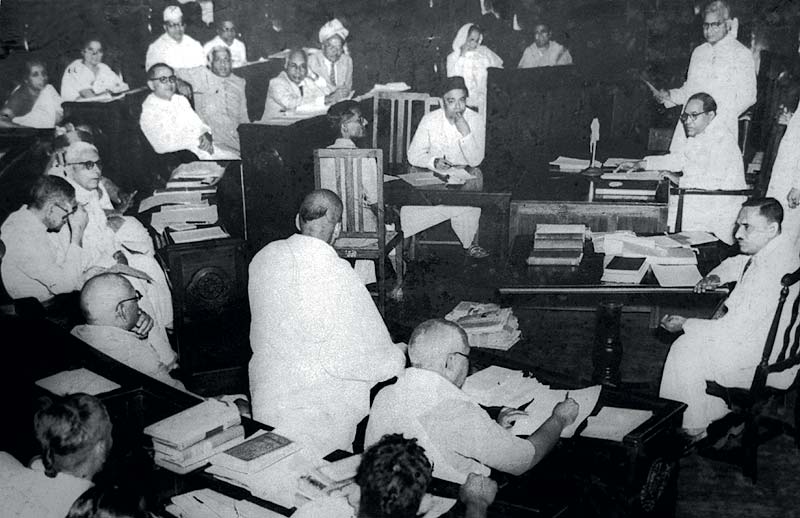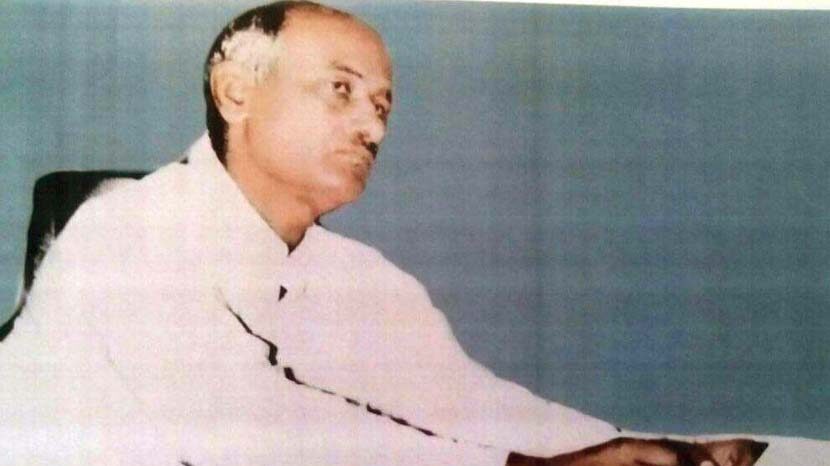Dr Ambedkar and Periyar did join hands, on the eve of India’s independence – when both supported the Pakistan demand, and argued for the rights of the Shudra and Dalit communities within the future polity, such as it was beginning to emerge. They also were in conversation about Buddhism, and Periyar accompanied Ambedkar to a major world Buddhist conference in Burma (Myanmar today) in early 1950s. Periyar followed Babasaheb’s work on the Hindu Code Bill and wrote warmly about it. He had, earlier, supported him in the matter of the communal award – and it was Periyar’s magazine that first translated and published Annihilation of Caste into Tamil (as early as in 1936; translations in other Indian languages followed much later) and his journalists kept a close watch on Babasaheb’s movements, and reported on them, constantly praising him, and endorsing his points of view from the late 1920s.

Periyar was unhappy about Dr Ambedkar joining the Constituent Assembly. He felt that in order to secure the abolition of untouchability as a fundamental right, Babasaheb had to forego his larger objective, the annihilation of caste as a constitutional goal and as a fundamental right. Periyar also understood his refusal to stay with Hinduism as a brilliant political move that forced the hand of the Congress to concede some of his demands (sic) whereby the cause of the Shudras was left behind.
A man of the streets
Periyar had interesting and complex views on matters such as rights. He upheld State power and authority in redefining custom, lore and in laying down the law even when it interfered with freedom to practise one’s faith – as he argued such freedom could also be invoked to justify untouchability and violence against women. His presence in the Assembly would certainly have provoked admiration as well as denunciation – but we must not forget that like Socrates, Periyar was a man of the streets, of the Agora, rather than Parliament.
Periyar was insistently critical of the political sphere, which to him, was inexorably given to instrumental reasoning and limited goals. He felt that being active in this sphere could prove corrupting – and so decided to keep away from it, and instead function as a permanent dissident and critical movement in society.
Periyar on Gandhi’s Satyagraha
Periyar’s critique of Gandhi was multifaceted. Let us quote from our book to make clear what this critique was all about.
(Periyar wrote): “His [Gandhi’s] religious guise, god-related talk, his constant references to Truth, Non-Violence, Satyagraha, cleansing of the heart, the power of the spirit, sacrifice and penance on the one hand and the propaganda his disciples and others—nationalists and journalists—who in the name of politics and the nation consider him a rishi, a sage, Christ, the Prophet, a Mahatma… and a veritable avatar of Vishnu on the other, along with the opportune use of Gandhi’s name by the rich and the educated… have together made Gandhi a political dictator” (Kudi Arasu 23.7.33; Anaimuthu 1974: 389-90).[1]

Periyar compared Gandhi to Annie Besant and pointed out that like Gandhi she had dominated nationalist politics by talking of the Bhagavad Gita, by claiming she communed with gods and mahatmas and by professing to know peoples’ previous and future births. The popularity of people such as Besant and Gandhi, noted Periyar, derived from their habit of putting their religious sensibilities to political use and endowing their political acumen with a mystical aura (Kudi Arasu 23.7.33; Anaimuthu 1974: 389-90). Writing a couple of months later, on the death of Annie Besant, a Kudi Arasu obituary noted that the waning of Besant’s influence in the Congress coincided with the entry of Gandhi and the growth of his influence in that party. The obituary suggested that in many significant ways, Gandhi was a fit substitute to Mrs. Besant (even as he was presented as an antidote to her powers and influence in the Congress), combining as he did matters of the spirit and issues of political import (Kudi Arasu, 24.9.33).
The Gandhian conundrum for Periyar was best represented in the Gandhian ideal of Satyagraha. In an article titled ‘Satyagraha’, he dwelt at great length on the meaning and relevance attached to this ideal in the Gandhian lexicon. He noted that the Self-Respecters could not possibly wage this ‘war of truth’. For those against whom this war would be waged, would consider opposing the Self-Respecters in name of a ‘truth’ of which they were convinced. Periyar went on to detail the nature of the Self-Respecters’ struggle and their achievements in respect of their anti-caste and anti-untouchability campaigns. He argued that as opposed to claiming to speak and act in the name of an ineffable truth, Self-Respecters had sought to persuade rather than force a change of opinion. They had travelled from town to town, from village to village, holding meetings, prevailing upon the public to listen and if convinced, heed their words. But they had not sought to explain and interpret their ideas to suit the occasion or the context. This mode of public debate, implied Periyar, was in stark contrast to the habitual Congress mode of conducting its public and political campaigns. Congress was interested in displays of power and sentiment; it was given to shows of defiance against India’s imperial rulers and was clearly interested in rousing rather than educating people’s sentiments and feelings on matters of import to them.
Periyar also pointed out that the appeal of Satyagraha of the Congress variety derived from its semantic associations. Congressmen were wont to attribute to the ideal of Satyagraha notions of dharma, sacrifice and divine will. Satyagraha, it was claimed, being morally and spiritually right, could not but succeed, could not but win its victories. By rendering Satyagraha as an ideal and a mode of protest naturally and inevitably successful, Congressmen had come to interest the people in its causes. Whether these causes actually succeeded or not, the aura associated with these, on account of their inherent ‘truth’, sustained and redeemed them in the eyes of thousands of ordinary Congressmen. Yet, pointed out Periyar, ‘there need be no truth in a particular cause (for which one conducts Satyagraha) nor need a winning cause need to be a particularly truthful one’. This was because Truth was never singular in character and could be interpreted differently and understood in a number of ways. Besides, what appeared true to one need not necessarily be true to another. ‘What is Truth? Untruth? For which may one conduct Satyagraha? Is there indeed a way of testing these things? What appeared as truth to, say, Pandit Madan Mohan Malaviya need not be true as far as the Self-Respecters were concerned.’
Periyar’s problem with the Gandhian notion of Satyagraha was simply this: It rested on faulty premises in that its relevance and worth could not be measured, except in and through its own forms of expression. Secondly, were one to interrogate its truth claims, one would have to admit that these were arbitrary and relative. Thirdly, and this proved particularly bothersome to Periyar, one could never be sure if the efficacy of Satyagraha was due to its inherent worth, or due to the fact that its proponents, by claiming they were ‘acting in Truth’, had coerced their opponents or those whom they addressed, into heeding their claims. Thus, he wondered if it was because the Satyagrahis’ arguments and ideas were persuasive and convincing that they were heeded, or because those who were forced to confront their obduracy had to give in to their claims, not being able to find a way out of a situation forced on them by the Satyagrahis. It was because the ethical effects of Satyagraha seemed to escape definition that Periyar held, the practice of Satyagraha demanded and required the simultaneous practice of manipulation, deception and falsehood.

Periyar also argued that, desirous as the Self-Respecters were of building a samadharmic society where property will be held in common, they could not possibly expect or hope that the conduct of Satyagrahas will enable Adi-Dravidas to acquire land or a share of the wealth that was held by religious institutions and temples. Neither would Satyagraha prove successful against zamindars and merchants and kings who were determined to keep their working population captive to their interest and who gave them enough only so that they may live to labour. What Satyagraha could do and had indeed achieved for all its pains (and for all the impetus given it by Gandhi and the Congress) was that it had forced the common people to trust to the divine powers of truth and instilled in them a false faith as to what could possibly be achieved to ameliorate their conditions of existence (Kudi Arasu, 6.9.31). For Periyar, then, Satyagraha served as an expressive modality in and through which the discourses of Gandhian nationalism had habitually been made available to the world at large. The moral ambiguity which lay at the heart of discourses and practices of Satyagraha were interpreted by him to represent the problematic nature of a politics that attempted to subsume its partisan concerns in a universal rhetoric of truth, patriotism and sacrifice. Satyagraha in this sense represented the favoured mode of expression of nationalism and one that rendered the latter an appealing idea (The Ideal Society: Imagining Dravida Nadu, Chapter 12, in Towards a Non Brahmin Millennium: From Iyothee Thass to Periyar, Samya, Kolkata, 2008).
The Indian State’s disregard for Periyar
Let’s say that the Indian State for thoroughly opportunist reasons appears to have “accepted” Babasaheb and Phule, but what does that mean, in a substantive sense, besides celebrating birthdays, putting up statues, and making ponderous dishonest speeches? Why has Periyar been not accepted even in this sense? Well, Periyar rejected the Indian State and nation – which cannot endear him to its ideologues and rulers. He also consistently identified nationalism with political Brahmanism; further he was fiercely critical of nationalism, and even his campaign for a separate Dravidian nation was on account of his opposition to caste, to what he called the Brahmin-Bania Indian nation-state and not because he was committed to a romantic ideology of a resistant Dravidian nationalism. He also had no use for or investment in the instruments of State power, unless they subserved his ideological and political vision – and this pragmatism was easily foregone, in the interests of the vision that he valued above all.
Further, unlike Dr Ambedkar he did not represent a potential political constituency that had to be wooed. To the end, he remained his own man, adored, loved, contested, reviled, but his followers were not definable by their specific political identities – they could be nationalist, liberal, Dalit, non-Brahmin, communist, anarchist, feminist, and from literally all social groups, so the State had no reason to “cultivate” him or to “tame” him. The State has not even thought it fit to compile his writings or to support their publication and dissemination.
His atheism, his feminism, his communitarian sense of his own autonomy – these have also made him a permanent dissident, a presence that is both exhilarating as well as one that provokes unease and discomfort.
[1] V. Anaimuthu, ed., Periyar E. Va. Ra. Sithanaikal (Thoughts of Periyar), Sinthanaiyalar Pathippagam, Trichy, 1974.
Forward Press also publishes books on Bahujan issues. Forward Press Books sheds light on the widespread problems as well as the finer aspects of the Bahujan (Dalit, OBC, Adivasi, Nomadic, Pasmanda) community’s literature, culture, society and culture. Contact us for a list of FP Books’ titles and to order. Mobile: +919968527911, Email: info@forwardmagazine.in)





